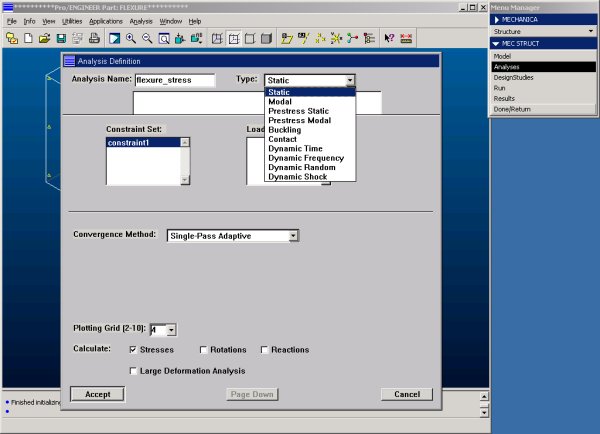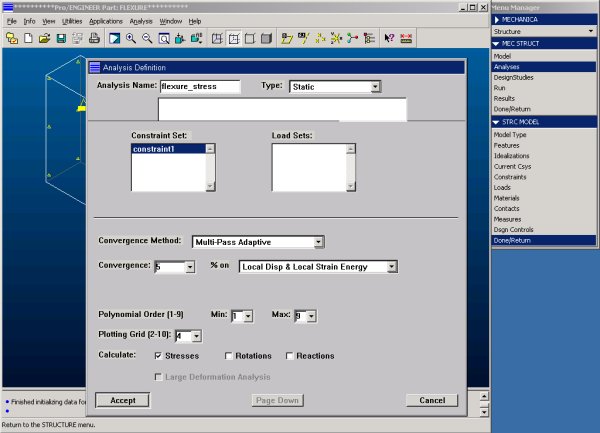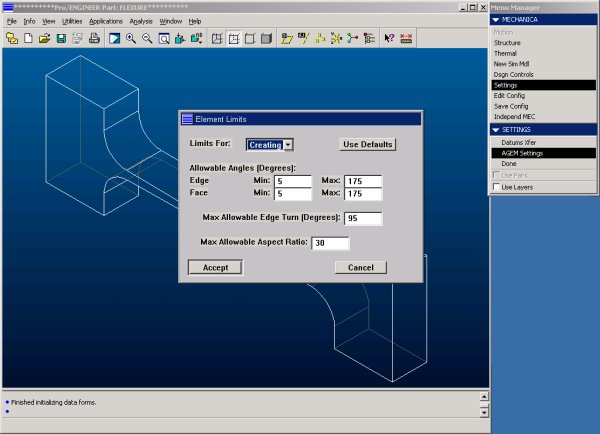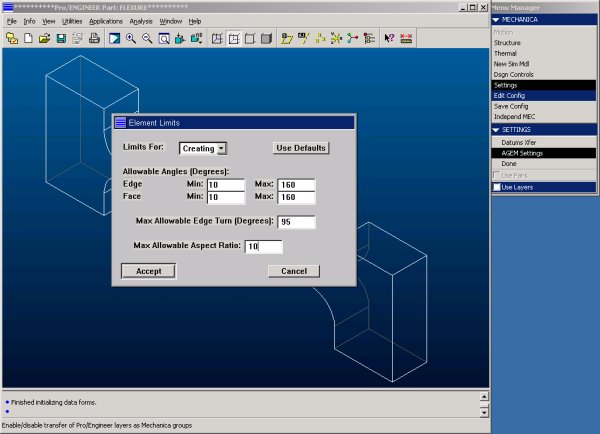Resources
Home
Step 4 - Defining the Analysis
Pro/MECHANICA can perform a variety of analyses that cover a wide range of engineering problems. In our case we are interested in the stress levels that result from an imposed displacement. This type of analysis is covered by the static analysis definition.
We also need to think about the convergence method of this analysis. Pro/MECHANICA is a p-type FEA software which increases the polynomial order of the equations that are used to describe the nodal displacements in order to improve on the quality of the result. The default setting when defining an analysis is set to Single-Pass Adaptive, which means it will run the analysis once using 7th order polynomial equations. While this is a fast way of doing it, running a FEA like this is not really advisable because the user receives no information about the convergence of the analysis and with it hints as to how good the result actually is. I generally recommend using a Multi-Pass Adaptive method whereby Pro/MECHANICA starts with 1st order equations and then increases the order after each pass until the result converges to within an acceptable level.
Should MECHANICA require a very high polynomial order (the 9th order is the maximum) or not converge at all, then a finer mesh using smaller elements will be required. This is done by changing the default setting in Setting -> AGEM Settings. The default size is shown below.
Increasing the minimum angle and decreasing the maximum allowable angles together with decreasing the maximum aspect ratio will force MECHANICA to use smaller elements. The following settings I have found to work well in most cases.




